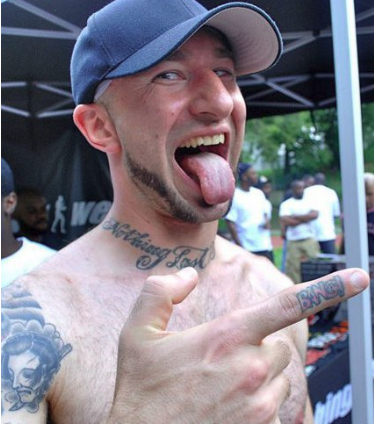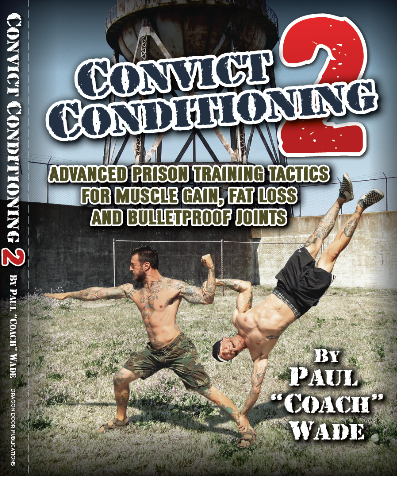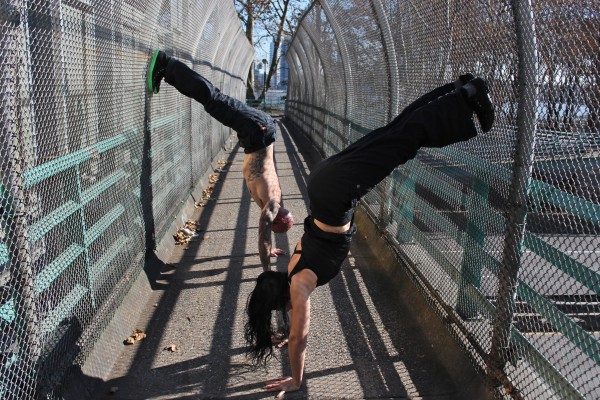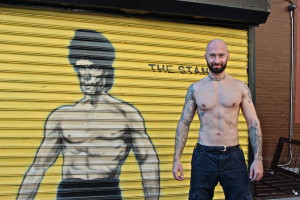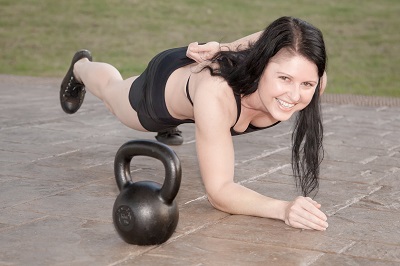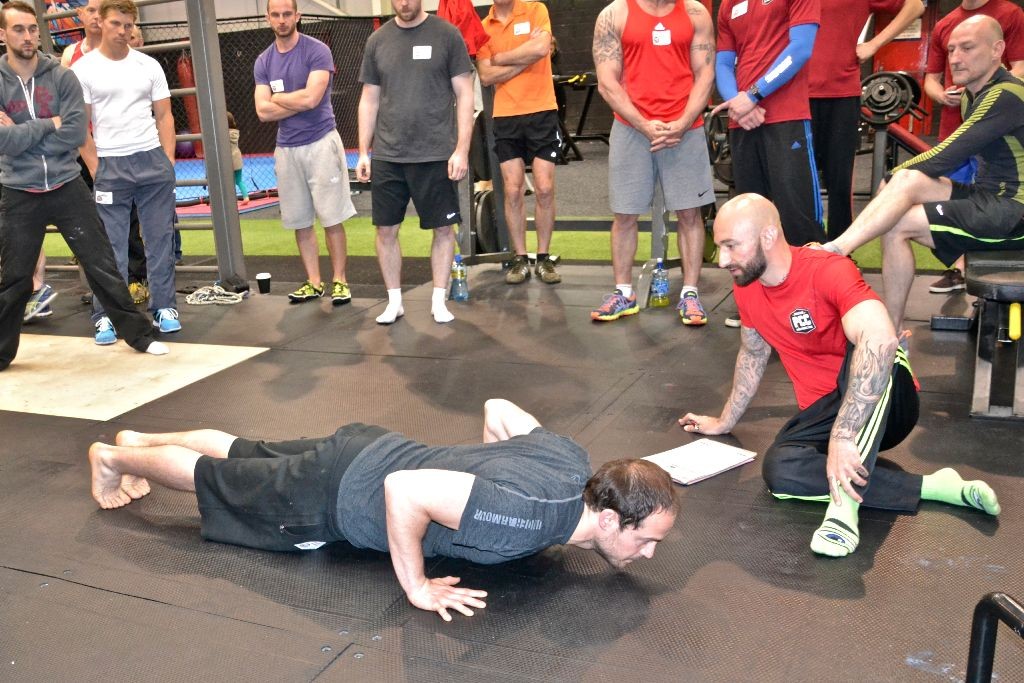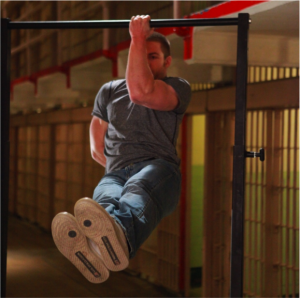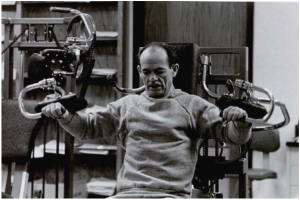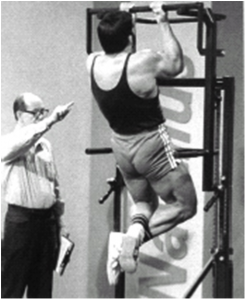My first real job as a personal trainer was working for the Lakeshore Athletic Club in Downtown Chicago. Though I already had a couple independent clients, I was hired at the former Wabash St. location in the heart of Chicago’s business district (“The Loop” as it’s known to Chicagoans) as a “fitness floor manager” before working my way up to being part of the training staff.
Being a floor manager is a much less important job than it’s made to sound. My main duties were picking up towels, re-racking dumbbells and making sure people didn’t exceed the 30 minute cardio machine time limit during peak hours. After a few months of that (I’d already had my personal trainer certification for a while by this point), I was finally deemed ready to train clients – I’d hit the big time! I was excited but also very nervous. Being someone’s trainer is a big responsibility and I wanted to do a good job.
Chicago is pretty cold and I started working at Lakeshore during the winter, so when they hired me they only gave me long sleeve shirts. Nobody saw my tattoos, which I quickly decided was a good thing. I wanted to attract as many clients as possible and I thought my ink might freak people out. I didn’t have any tattoos on my hands and neck yet, so it was fairly easy to keep them all covered.
During my teens, a lot of people tried to make me feel foolish for getting my arms tattooed while I was so young. At the time, I didn’t give a damn what anyone thought, but by my twenties, I started to buy into the mindset that being tattooed might be a hinderance in my professional life.
In general, I was pretty insecure during my early adulthood. In fact, I was so unsure of myself when I began my career as a trainer that I remember being genuinely surprised the first couple of times I closed deals. I wondered if my time was really worth the money. Almost every new trainer questions themselves at some point and it’s not necessarily a bad thing. I think it shows that you really care.
Though it took some time to get the ball rolling, after a few months, I started to feel more comfortable and confident in my role as a personal trainer. Things were going great; I was spending lots of time in the gym getting to know everyone and I was beginning to learn the business. I started to pick up more clients and earn the respect of my fellow trainers. I was also learning a ton about working out!
Since it was so cold, it was no big deal to wear long sleeves every day. I probably would have wanted to anyway. Even in the summer, they always had the air conditioners pumping, so nobody thought much of it. The only time I ever had my tats exposed was for a quick second in the locker room, though I generally made it a point to try to avoid others while I was changing.
After I had been there for about a year, my training manager approached me one day and told me one of his clients said something to him about the trainer with all the tattoos. He was confused and told the client he didn’t have any tattooed trainers on staff. Eventually he figured out he’d never seen me in anything but long sleeves. The cat was out of the bag! He asked to see my arms and I sheepishly rolled up my sleeves. Then he told me he thought my tattoos were pretty cool and said I shouldn’t feel the need to keep them covered up.
What a relief it was to find out that nobody actually cared! In fact, a lot of folks at the gym really dug my ink. Like many people, I was afraid of being misunderstood, so I shielded my true self from the world. Funny enough, it was only after I embraced who I am that I started to really enjoy going to work and feeling comfortable in my role as a trainer – and a man.
Not only did I feel at ease wearing short sleeves after that conversation, I also began to feel more comfortable just being myself. I started having more fun with my clients by making jokes, telling stories and generally letting them get to know me more as a person. I came to find that this is a fundamental part of successful personal training.
When I moved back home to New York City and started working for New York Health and Racquet Club, I was pleasantly surprised to see that there were lots of other heavily tattooed trainers working for that company. The guy who hired me at NYHRC had even more ink than I did. My newfound confidence allowed me to become fairly busy within my first several months there. Though New York is a much more competitive market than Chicago, I eventually stepped up my game and within a few years became not only the top trainer in my club, but eventually the top trainer in the company. In December of 2008, I set a NYHRC company record for gross personal training sales by a single trainer in a single month. I celebrated the occasion by getting the tattoo I have on my right hand index finger. Bang! I had truly arrived!
Though things were going great, I soon started to feel like there was no way for me to grow within the confines of a commercial gym. There was so much about the mainstream fitness scene that I wanted to get away from. The unrealistic expectations, the “miracle” breakthroughs, the so-called “quick fixes” – not to mention all the emphasis on machines! Plus there were also the usual frustrations of corporate bureaucracy to contend with.
Where I had once wanted to fit in, I now wanted to stand out. I decided that I needed to do things on my own terms. I had so many ideas that seemed in contrast to what everyone else was doing. I knew there had to be more people who felt like me.
That need to connect with like-minded people was the motivation to start my blog. Soon after that, I quit my job at NYHRC to focus full time on writing. Since I wasn’t making any money writing yet, I started training a few clients at the park and working part-time at a small, independent facility called Nimble Fitness. Everyone thought I was crazy, but I knew there was no way for me to grow without starting over.
I slowly began building a following online and a reputation in the neighborhood. I focused on writing as much as I could and getting my articles and pictures in other websites and magazines. After being rejected by countless book agents and publishers, I self-published my first book, We’re Working Out! – A Zen Approach to Everyday Fitness, in 2010. During the next year, I wrote almost a hundred articles and created nearly as many YouTube videos. I also managed to sell close to 1,000 copies of my book – a pretty big success by self-publishing standards.
One day I got an email from Paul “Coach” Wade telling me he’d read my book and loved it. What a huge compliment! I would have been quite content if he had stopped there, but of course, that was just the beginning.
My writing wasn’t the only thing that Coach Wade liked. He also liked my look – especially the tattoos. Then he told me about a new book he was working on. It was the sequel to a book called Convict Conditioning, which I had of course, heard a lot about. To my amazement, Coach wanted me and my brother Danny to appear in Convict Conditioning 2. Ironically, the tattoos that I was once concerned would limit my career opportunities wound up providing the exact opposite effect.
Appearing in Convict Conditioning 2 was the beginning of a whole new life for me. Over the next several months, I went from being a relatively unknown fitness blogger to one of the most recognizable faces in the calisthenics community. Instead of getting a few hundred views a day, my website soon began receiving thousands of daily visits. My YouTube views quickly climbed into the millions and I started getting a dozen or more Facebook friend requests every day.
In the last year and a half, I’ve published two of my own books with Dragon Door, Pushing The Limits! and Raising The Bar, as well as a DVD version of Raising The Bar. My audience continues to grow daily and I’m connecting with more people than I ever thought possible. But my favorite thing about working with Dragon Door is the freedom they’ve allowed me. I’m living my dream and I don’t have to compromise myself to do so.
When John Du Cane and Paul Wade asked me about leading the PCC program, I jumped at the opportunity. Though being a writer and blogger has opened doors for me, actually training people is still where my deepest passion lies. Books and DVD’s are great, but there is no substitute for an in-person experience. I am thrilled to be able to take the show on the road and train with you guys in the flesh.
We’re Working Out!
Al


